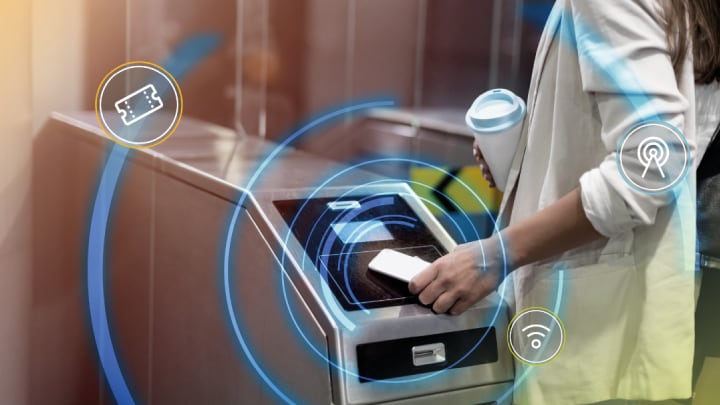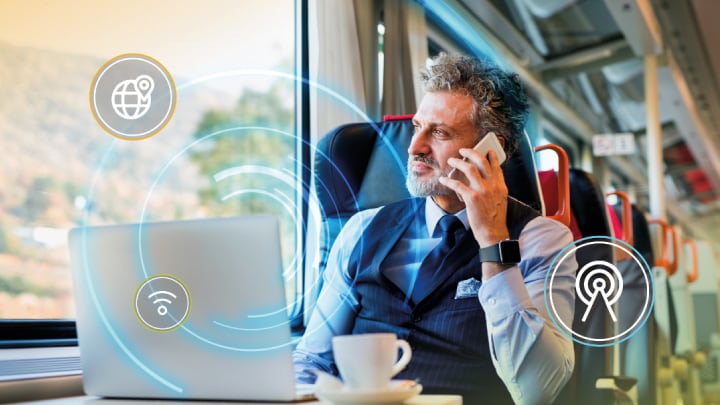Urban railway systems like subways, trams and commuter trains are essential to city life, making metropolitan areas more livable and more sustainable. Whether operating above ground or below, rail-based mass-transit systems benefit everyone by reducing road congestion, air pollution and energy consumption. They also enable urban expansion, which is particularly important now, as metropolitan areas around the world continue to grow.
The Covid-19 pandemic has had a significant impact on urban railways as cities worldwide have issued stay-at-home orders and people have avoided the enclosed spaces of subways and trains. But even before the pandemic, ridership was starting to slip, in part due to widespread availability of alternative modes of transport, including rideshare services and bike rentals.
In the better days ahead, once the pandemic begins to subside, urban railways will need to regain ridership and attract new passengers to continue supporting urban life. Enhancing the rider experience will be an important part of this effort, because when passengers have a positive impression of the system, they’re more likely to choose it over other options.
Wireless Is the Way
Wireless technology has become a prominent part of the passenger experience, as more passengers have smartphones, tablets, laptops and other connected electronics with them when they ride public transport and want to use their devices for entertainment, real-time passenger info and other rail-related services before, during and after their journey.
Transit authorities can use a mix of wireless standards ranging from familiar protocols like cellular, Wi-Fi and NFC, to less widely recognized new protocols like UWB to meet and exceed passenger expectations. As a result, urban railways become systems that people use, not because they have to, but because they actually prefer to.

Following a railway journey from start to finish shows what’s possible. Before the trip, wireless technology and transit apps make it easier to purchase a single ticket, top up an account, plan a journey and even reserve a seat. At the station, wireless lets smartphones and wearables double as tickets, for faster entry (and exit) and secure fare collection. While waiting for a train, wireless enables real-time updates on digital signs and lets interactive posters link passengers to more information. Onboard, wireless makes it easy to access entertainment, receive travel updates and make plans for the next part of the journey. Wireless also makes the station and the train safer by making it easier to install security cameras in places that are hard for wires to reach. The benefits even extend beyond the arrival, as wireless makes it easier to explore the local area, take advantage of special passenger discounts or continue on with quick access to rideshares and bike rentals.
Better Together
Developing the wireless ecosystem that supports this kind of connected passenger experience is a bit like building a competitive sports team, where each player builds on individual strengths to create a successful lineup. For transit authorities, the lineup includes several wireless protocols, each supporting one or more aspects of the journey. Here’s a look at two stages of the journey where wireless really stands out, entering and exiting the station and accessing information while at the station and onboard.

Entering and Exiting the Station
Contactless ticketing, which enables tap-and-go entry at turnstiles, has been around for more than 25 years in the form of smartcard- and paper-based tickets that use MIFARE chips and other HF-powered wireless technologies. Since just about everyone carries a mobile device these days, smartcard access is going mobile, with NFC and cloud-based solutions that digitize the smartcard and make it available on your phone or wearable.
Your phone becomes your ticket so there’s one less thing to carry and keep track of. At the same time, your mobile device becomes your interface to the system, letting you check your balance, manage top-ups, view real-time schedules, early loyalty points and reserve seats.
- Hands-Free Access with Dual-Frequency Cards
With a traditional HF smartcard or mobile device, you present your card or device at the turnstile, wait for the reader to confirm your card validity, charge your account and open the gate—then you pass through. The process takes only a few seconds, but when hundreds of people are trying to use the system at once, turnstiles can quickly back up and cause frustrating delays.
- A dual-frequency card, equipped with both HF for close-range reading and an UHF for long-range reading, can help speed things up. There can be special “hands-free” lanes that operate on long-range UHF technology (RAIN RFID technology). You don’t need to present your card; the reader recognizes the valid credential in the UHF portion of your card and you just walk through.
- Entry points can remain open and only close when the system can’t detect a valid credential. To use the hands-free system, passengers can present their dual-frequency card at a reader posted outside a designated “express” area and receive a period of hands-free access, limited to a day, a week or a month, depending on their subscription.
- Hands-free access increases throughput, even during rush hour and has the added benefit of letting people stay farther away from each other with social distancing to prevent crowding in tight areas
- Hands-Free Plus Localization with UWB
Another wireless technology that can be used for hands-free access is ultra-wideband (UWB), a technology that is being designed into next-generation smartphones. UWB supports long-range reading without line of sight, so it works with hands-free access in much the same way UHF does. Simply approach the turnstile, with your UWB-enabled device in your pocket or your bag and the reader lets you through.
- What’s more, UWB adds an extra capability, called localization, which provides precise directions, especially indoors and makes it easier to find objects.
- As part of a transit app, UWB can help you navigate large, multi-level stations, with the “blue ball” following you throughout the facility, even when you’re underground. When you arrive at your destination, UWB makes it easier to explore the local area, with precise directions to local shops, whether they’re in the station or somewhere nearby. UWB also makes it easy to find a friend in a crowd, find your rideshare in a line of cars or locate the exact bike you rented. With UWB, precise accuracy means you’re never lost and can always find what you’re looking for.
Accessing Information While in Transit
Whether it’s updates about the journey itself, browsing the web, streaming content or getting work done, wireless helps travelers stay connected while they’re on the move.

- Staying Connected with Wi-Fi 6 and 5G cellular
5G and Wifi 6 improve online access by bringing more speed, lower latency and increased device density to the WLAN infrastructure. That means more people can use their devices to access content and still enjoy broadband performance, with data-rich content available on demand.
- With Wi-Fi 6 and 5G available to passengers while they’re traveling, everyone in the transit system (either at the station or on board) can use their smartphones and other devices to get information fast. Broadband access makes it that much easier to watch a video, find out if your connection is on schedule or arrange a rideshare rental for when you arrive at your destination.
- In the station and onboard, Wi-Fi 6 also supports real-time video surveillance systems, which can enhance security and help passengers feel safer and more at ease. Wi-Fi 6 is also a useful tool for automating digital signage, so passengers stay informed with real-time status of arrival and departure times, service updates, route changes, weather forecasts, public-service announcements, emergency alerts and advertising.
- Tapping for More Info with NFC
Near field communication (NFC), the same technology that enables contactless payment and ticketing, can also be used to provide information. Small, battery-free NFC tags can be integrated into posters, seats, tables and other parts of the train or the station. Simply tapping your mobile device to the indicated sport provides quick access to useful data, either stored in the tag itself or on a website linked to the tag. With NFC, people can learn more about the station or train they’re in, get help answering questions, get safety reminders and grab coupons.
The Future Is Wireless
Wireless technology, in its various forms, makes it easier for people to interact with urban railway systems and provides more ways to make the journey more enjoyable. Today’s passengers have higher expectations in terms of being able to use their devices and access information. They’re trending more digital and want more options at their fingertips.
By embracing wireless and making it an integral part of the rider experience, transit authorities can make it easier for passengers to access, engage with and enjoy urban railways. And that, in turn, can help increase ridership and make underground railways part of the many wireless-driven smart city initiatives that aim to make urban life better and more sustainable.
Discover more at Connectivity.







